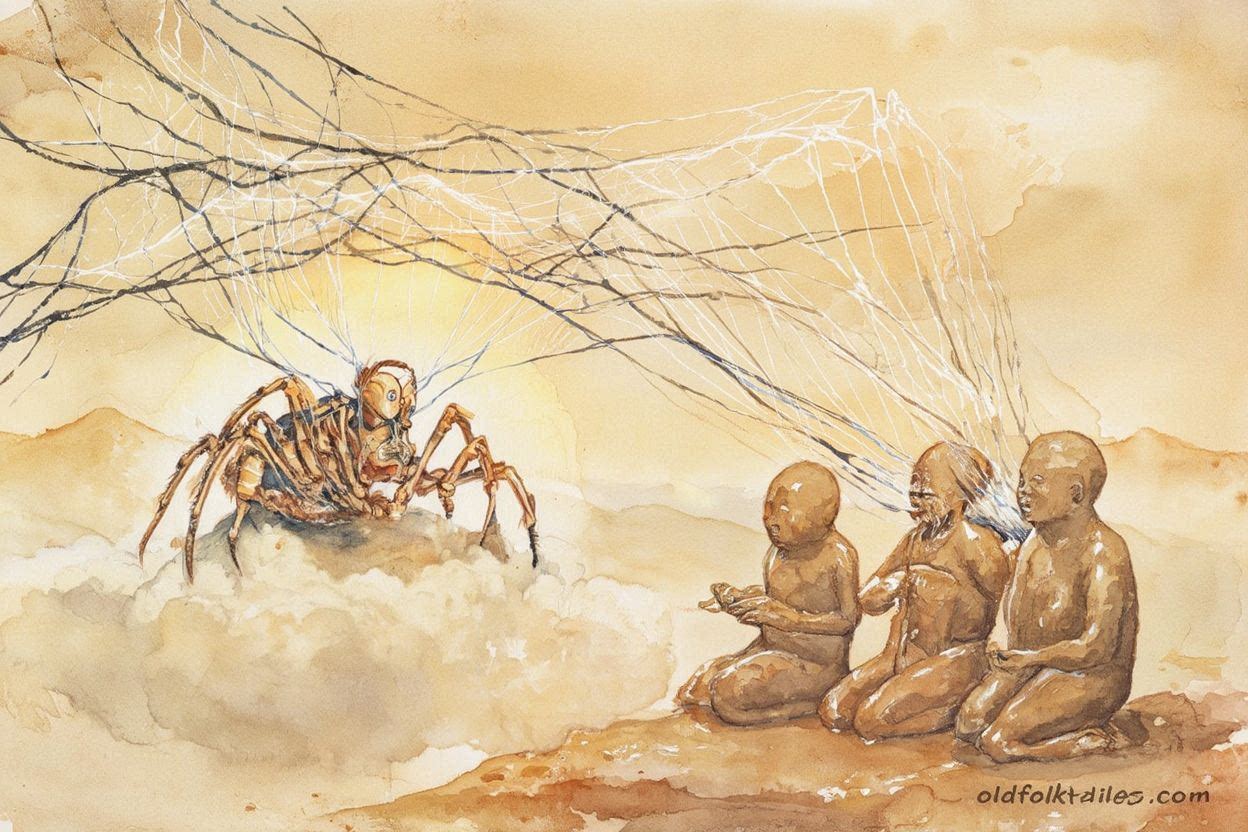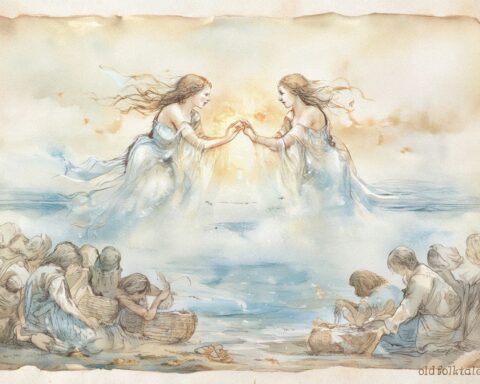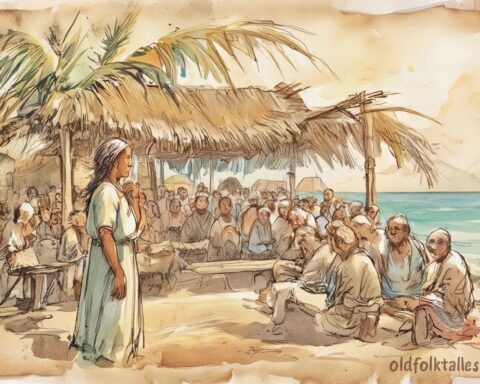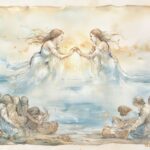In the beginning, there was nothing but the deep emptiness of space, where silence stretched forever and no land or light could be seen. From this endless stillness came Nareau, the great spider god, the first being of thought and purpose. He drifted in the void, spinning webs of light with his endless hands, searching for a place to weave the beginnings of life.
For ages, he moved through the darkness, pondering what should come first. “If there is darkness,” he thought, “there must also be light. If there is sky, there must also be earth.” And so, Nareau began his work.
With threads of his luminous web, he divided the world into two great realms, light and darkness. The light shone gently, giving warmth and direction, while the darkness became a resting place for dreams and silence. Nareau stretched his web farther and spun the sky above and the earth below, anchoring them together with invisible cords. Where the cords touched, mountains and seas formed. The waves began to move, carrying whispers of life yet to be born.
Nareau descended to the soft clay of the new earth and pressed his many fingers into it. He molded mountains, valleys, and rivers. From the smallest grains of sand, he drew the shape of islands, each surrounded by a ring of coral. He looked upon his work and saw beauty, but it was still empty. “This land needs breath,” he said softly. “It needs voices to sing, and hearts to remember.”
Taking a handful of clay, he formed the shape of a man. He molded the face carefully and gave it eyes to see the sunrise and mouth to speak gratitude. Then he shaped a woman beside him, giving her hands to plant and gather, and a heart to nurture life. Into both of them he breathed softly, and they opened their eyes, standing tall upon the sand. They were the first people, the ancestors of all humankind.
Nareau smiled upon his new creations, but he knew the world needed more. He gathered more clay and shaped the animals that would live alongside humans. He made the fish to fill the sea, the birds to dance upon the wind, and the turtles to wander between land and water. From the dust, he formed crabs and shellfish to clean the shores, and from the shadows, he made the insects that would hum softly in the night.
Each creature had its own place and duty, and Nareau spoke to them, saying, “Live in harmony, for every life depends upon another. None among you is greater than the rest. The sea feeds the land, and the land returns its blessings to the sea. Keep this balance forever, and peace will remain.”
The people listened and honored his words. They built homes by the sea, fished with care, and shared the gifts of the land. But soon, the people began to wonder about the sky and what lay beyond. “Who lives there?” they asked. Nareau smiled and decided to show them.
He climbed to the top of the tallest tree, spun a thread from his body, and cast it upward until it reached the heavens. As he climbed, he wove the stars from his light and placed them in the dark sky. The stars glittered like the eyes of the ancestors watching over their children. He hung the moon to guide fishermen by night and the sun to warm the day.
When he looked down, he saw how the light and darkness worked together in perfect rhythm day followed night, and life flourished. Yet even as he marveled at his creation, he understood that the balance he had built would always need care. “There will be storms,” he said, “for without wind and rain, no new life can grow. There will be darkness, for without it, rest and renewal would not exist.”
One day, Nareau gathered the people and spoke once more. “I have given you this world,” he said. “You must protect it as I have made it. Respect the sea, for it carries your food. Respect the land, for it gives your shelter. Respect the creatures, for they are your kin in life. If you take too much or forget gratitude, the balance will break, and the world will tremble.”
The people bowed their heads in thanks, and from that moment onward, they honored the cycles of nature. They sang songs for Nareau, calling him “The Weaver of Worlds” and “The First Creator.” Even now, when the sea wind blows through the palms and the stars shimmer over the atolls, the people of Kiribati remember his name and the wisdom he left behind.
It is said that Nareau still watches over the islands, resting in the space between light and shadow. When fishermen see spider webs glistening in the morning sun, they whisper a prayer, for they believe the spider’s silk is Nareau’s reminder that all things are connected.
Thus, from the silence of nothingness, the spider god Nareau spun a world of beauty, balance, and life, a world that endures as long as people remember the sacred harmony he taught.
Moral Lesson:
The story of Nareau the Spider God teaches that balance is the foundation of creation. Light and darkness, sea and land, man and nature, all must exist in harmony. It reminds the people of Kiribati to honor the natural order and live in gratitude for the interconnectedness of all things.
Knowledge Check:
1. Who is Nareau in Kiribati mythology?
Nareau is the spider god who created the world and brought balance to all life.
2. What was the first thing Nareau created?
He separated light and darkness to form the foundation of the universe.
3. How did Nareau create the first humans?
He shaped them from clay and breathed life into them.
4. What did Nareau teach the people about the world?
He taught them to live in harmony with nature and maintain balance.
5. What do spider webs symbolize in Kiribati culture?
They symbolize Nareau’s presence and the connection between all living things.
6. What is the main lesson of the story?
That all life depends on balance and gratitude toward creation.
Source: Adapted from The Creation Stories of Kiribati by the National Museum of Kiribati (2012).
Cultural Origin: Kiribati (Micronesia)












